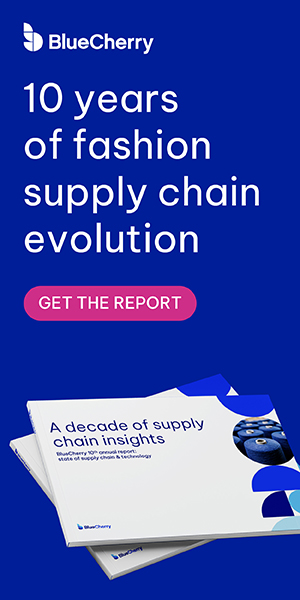Topics
AI in Motion: Transforming the Supply Chain from Planning to Delivery

Okay, today's supply chains feel like navigating a constantly shifting maze, right? You're juggling global suppliers, demanding customers, and disruptions, all while trying to keep costs down and be greener. It's a tough job!
Artificial Intelligence (AI) holds the promise of shaking things up. Is it just another trend, or can it truly transform operations now? This post explores AI's real-world impact across the supply chain, from merchandising and design to demand forecasting and supplier management. Let's take a look at how AI is building more agile, efficient, and resilient supply chains today.
Intelligent insights from concept to customer: AI in merchandising and design
AI transforms product creation, offering intelligent insights from concept to customer. Imagine predicting the next big trends: AI-powered systems analyze consumer data, social media buzz, emerging brands and past sales to provide fast, accurate predictions for merchandisers.
Designers can also benefit significantly. By processing market feedback, AI suggests design improvements and sparks new creative concepts. Apparel and sportswear companies use AI to analyze trends and past collection performance, guiding designers in creating appealing collections. Technologies like augmented reality also enable designers to create immersive product visualizations, streamlining design and reducing sample needs.
Key benefits of implementing AI in to merchandising and design include:
- Improved prediction of fashion trends and consumer preferences.
- Data-driven decisions for product assortment and pricing.
- Enhanced design inspiration and suggestions based on market feedback.
- Augmented reality tools for faster product development and sample savings
Planning for precision: AI in demand forecasting, inventory, and supplier management
AI truly shines in supply chain planning, particularly for demand forecasting, inventory optimization, and supplier management.
For demand forecasting, AI can act like a super-powered crystal ball. Instead of relying solely on gut feelings or historical sales, AI algorithms, often powered by machine learning (ML), can incorporate broader data sets including economic and market data (like interest rates and employment figures), supply chain metrics (including shipping activity and inventory levels), environmental data, and demographic/behavioral data (such as workforce analytics and consumer reviews).
ML algorithms learn from data to improve predictions. Traditionally, demand planning has relied heavily on spreadsheets, which can be overwhelming with large datasets that obscure high-level trends. AI-powered forecasting tools, on the other hand, can easily process this data, identifying trends that are often invisible in spreadsheets.
AI is also taking inventory management and supplier alignment to the next level. By analyzing supply and demand across locations, AI calculates optimal stock levels and automates replenishment — helping companies reduce waste, avoid stockouts, and boost profitability.
It also acts as an early warning system for supplier disruptions. By analyzing supplier performance data alongside broader economic trends, AI helps businesses spot potential issues before they escalate—keeping operations resilient and relationships on track.
Key capabilities of AI in planning include:
- More accurate demand forecasting by analyzing diverse data sources.
- Optimization of inventory levels to reduce costs and prevent stockouts.
- Proactive risk assessment and performance monitoring of suppliers.
- Identification of potential supply chain disruptions.
Optimizing operations: how AI is transforming production planning and logistics
AI is reshaping production and logistics, making operations smarter, more sustainable, and more cost-efficient.
On the factory floor, AI acts like a master conductor — analyzing machine performance, inventory levels, and incoming orders to generate dynamic production schedules. It helps predict component needs, streamline sourcing, and optimize everything from fabric usage and machine downtime to labor and floor space. The result? Less waste, faster sourcing, and lower production costs across the board.
One major automotive manufacturer, for example, uses AI to monitor its production lines in real time—anticipating slowdowns and reallocating resources to avoid disruptions. Predictive maintenance powered by AI also helps reduce downtime and keep operations running smoothly.
Beyond the factory, AI plays a critical role in logistics. An example of this is a top e-commerce retailer that uses AI to assess traffic patterns, weather, and historical delivery data to determine the fastest, most efficient routes — automating replenishment and balancing supply and demand to reduce emissions and improve order fulfillment.
In warehouses, AI can also enable smarter inventory placement and automated picking. On the quality control side, AI-driven visual inspection systems can pinpoint defects with precision, cutting down on waste and improving product consistency.
The key impacts of AI on operations include:
- Optimized production schedules and resource allocation.
- Predictive maintenance to reduce downtime.
- More sustainable manufacturing practices through waste and energy reduction.
- Efficient logistics and route planning for cost and emission reduction.
- Improved warehouse management and quality control.
How to harness the power of AI in your supply chain today
AI is already rapidly transforming the supply chain, from merchandising and design to production and logistics. AI's ability to analyze data and provide insights drives efficiency and agility. Businesses use AI to build smarter, more resilient supply chains. AI-powered solutions are essential for navigating today's supply chains. AI is not just a trend; it's a fundamental shift in business.
At BlueCherry, our suite of AI-powered supply chain products, including PLM (Product Lifecycle Planning), Statistical Demand Planning, Inventory Planning, ShopFloor Control, and Supplier Planning, helps you build a smarter, more resilient supply chain.
Visit us at BlueCherry.com to learn more about how these solutions enable intelligent merchandising and design, precise demand and inventory planning, optimized shop floor control and supplier collaboration, and efficient, sustainable operations. Discover the BlueCherry advantage and future-proof your supply chain.

